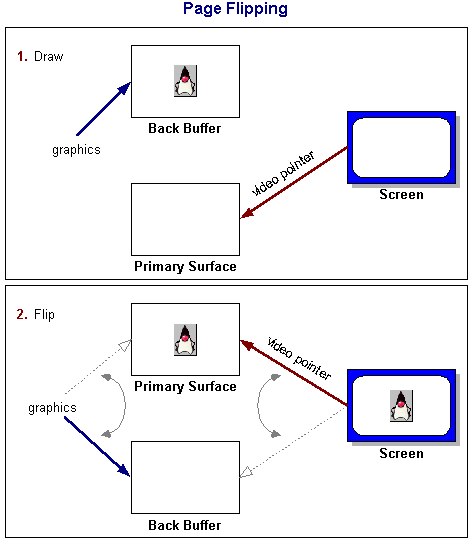Double Buffer Pattern in Game Programming
When we develop games, we need to create smooth, seamless visuals that update instantly. But computers work sequentially, processing one thing at a time. How do we bridge this gap?
Enter the double buffer pattern.
Double buffering is a technique that creates the illusion of instantaneous updates in a sequential system.
How does it work?
Imagine you're painting a mural, but people are constantly looking at your work. You don't want them to see your half-finished strokes, right? So you use two canvases:
- The "next" canvas: This is where you do all your painting.
- The "current" canvas: This is what people see.
When you finish painting, you quickly swap the canvases. Voila! The viewers see a complete new image, with no idea of the work-in-progress. In computer terms:
- "Next" buffer: Where the game writes new frame data.
- "Current" buffer: What the video driver reads to display on screen.
- Swap operation: Instantly switches the two buffers.

Swapping buffers
There are different types of swapping depending on implementation:
- pointer swap
- swap with copy
Keep in Mind
- The swap operation must be atomic and can take time
- You need memory for two complete copies of the state
Why is this important?

Without double buffering, we'd see visual glitches called "tearing". Imagine seeing half of a character's old position and half of their new position - not a smooth experience!
// A simple implementation in cpp
Scene {
public:
Scene()
: current_(&buffers_[0]),
next_(&buffers_[1])
{}
void draw() {
next_->clear();
// Draw operations here
swap();
}
Framebuffer& getBuffer() { return *current_; }
private:
void swap() {
Framebuffer* temp = current_;
current_ = next_;
next_ = temp;
}
Framebuffer buffers_[2];
Framebuffer* current_;
Framebuffer* next_;
};
Conclusion
Almost every graphics API uses double buffering. Moreover, modern games even have triple-buffering, as name suggest they swap 3 buffers. However, there is input lag. As a finishing words I want to present some of the work I have done folling with pattern:
cube: